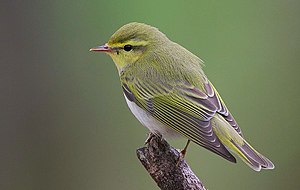Warbler
In today's article we are going to delve into the exciting world of Warbler. Whatever your interest in this topic, whether due to its historical relevance, its impact on current society or its influence on different areas of study, we are sure that you will find fascinating information. We will address key aspects of Warbler, from its origin to its evolution over the years, in addition to analyzing its importance today. It doesn't matter if you're an expert in Warbler or just getting started, this article has something for everyone. Get ready to discover everything you need to know about Warbler!

Various Passeriformes (perching birds) are commonly referred to as warblers. They are not necessarily closely related to one another, but share some characteristics, such as being fairly small, vocal, and insectivorous.
Sylvioid warblers
These are somewhat more closely related to each other than to other warblers. They belong to a superfamily also containing Old World babblers, bulbuls, etc.
- "Old World warblers", formerly all in family Sylviidae
- Leaf warblers, now in family Phylloscopidae
- Typical bush warblers, now in family Cettiidae
- Grass warblers and megalurid bush-warblers, now in family Locustellidae
- Marsh and tree warblers, now in family Acrocephalidae
- True warblers or sylviid warblers, remaining in family Sylviidae or moved into the Timaliidae
- Cisticolid warblers, family Cisticolidae
- Malagasy warblers, the newly assembled family Bernieridae
Passeroid warblers
The two families of American warblers are part of another superfamily, which unites them with sparrows, buntings, finches, etc.
- Olive warbler, monotypic family Peucedramidae
- New World warblers, family Parulidae
Other
- Tit-warblers or flycatcher-tits, family Stenostiridae
These are closely related to the titmice and chickadees
- Australasian warblers, family Acanthizidae
These are the most distinct group of warblers. They are not closely related at all to the others, but rather to the honeyeaters and fairy-wrens.
- Hawaiian honeycreeper—warbler-niched-(adaptive radiation), genus H. virens–common amakihi. (See: List of adaptive radiated honeycreepers)
References
- Wilson, Eisner, Briggs, Dickerson, Metzenberg, O'Brien, Susman, & Boggs. Life on Earth, Edward O. Wilson, Thomas Eisner, Winslow R. Briggs, Richard E. Dickerson, Robert L. Metzenberg, Richard D. O'Brien, Millard Susman, William E. Boggs, c 1973, Sinauer Associates, Inc., Publisher, Stamford, Connecticut. (hardcover, ISBN 0-87893-934-2)